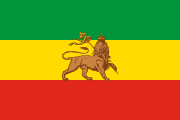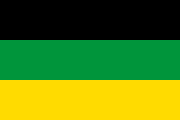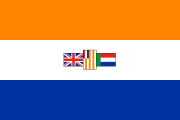Sub-Saharan Africa
Middle East and North Africa

Turkey
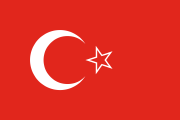
Hatay
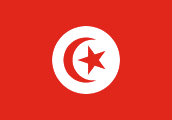
Tunisia
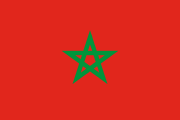
Morocco 33 Moroccan merchant ships in the French zone flew what was called the "Arab ensign", the national flag with a French tricolour added to the top-left corner.
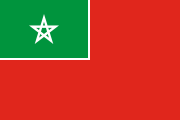
Morocco
Spanish merchant flag 44 Flown by merchant ships operating out of the Spanish zone in northern Morocco. The Moroccan national flag was flown on land.
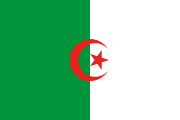
Algeria 55 Flown by nationalists and indepenence activists. The French colony in Algeria did not have an official flag.

Egypt
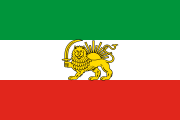
Iran
state flag 66 Flown by the government, and often by private citizens. At sea, and in certain ceremonial settings on land, the ratio was 1:3.
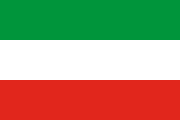
Iran
national flag 77 Allowed to be flown by anyone. At sea, the ratio was 1:3.
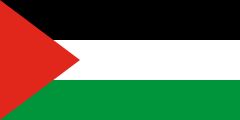
Palestine 88 Flown unofficially by the Arab community. Merchant ships flew a red British ensign with a badge that said "PALESTINE". The Jewish community flew the modern flag of Israel.

Transjordan
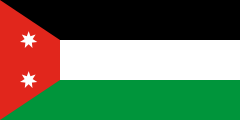
Iraq
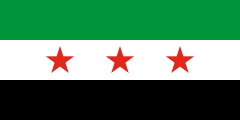
Syria
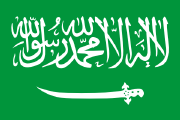
Saudi Arabia
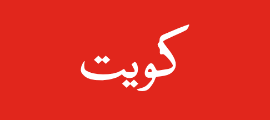
Kuwait 99 There were many variations of this flag, depending on who was flying it and when. Some versions would have added inscriptions, decorations or royal symbols. The flag could also be triangular.

Yemen

Muscat and Oman · Zanzibar

Bahrain 1010 The number of points could vary.

Qatar 1111 The design of the flag wasn't laid down in law, and this may have been one of many variations in use at the time.
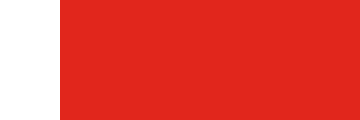
Abu Dhabi · Dubai · Ajman · Umm al-Quwain

Ras al-Khaimah · Sharjah · Kalba

Eretz-Israel 1212 Flown by the Jewish community in the British mandate of Palestine. Direct ancestor of the flag of Israel.
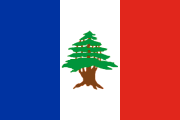
Lebanon

Druze

Kurdistan

Assyrians
Western Europe
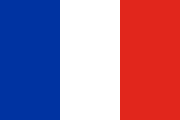
France

Italy
national flag 1313 Flown by private citizens and merchant ships. The "Italian Social Republic", the Nazi puppet regime in the north, flew the plain tricolour as a national flag and had a war flag with an eagle gripping a fasces. The anti-fascist Italian partisans flew either plain tricolours or tricolours with a white or red star on the middle stripe.
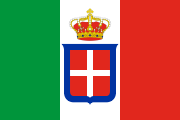
Italy
state flag 1414 Flown by the government and navy.

Ireland
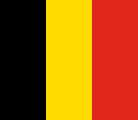
Belgium

Netherlands

Luxembourg
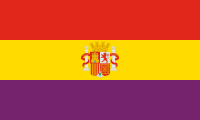
Spain
Republican flag 1515 Flown by the Republican government during the Spanish Civil War.

Spain
Nationalist flag 1616 Flown by the rebel Nationalist faction during the Spanish Civil War.
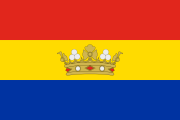
Andorra
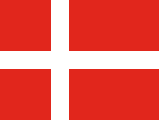
Denmark
national flag 1717 Allowed to be flown by anyone.
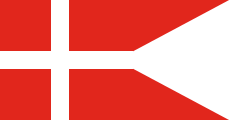
Denmark
sovereign flag 1818 Flown by the royal house, the government, and the armed forces. Also granted to a select list of private institutions and companies.

Norway
merchant flag 1919 Allowed to be flown by anyone.

Norway
state flag 2020 Flown only on state-owned buildings and naval ships.

Iceland
national flag 2121 Allowed to be flown by anyone.

Iceland
state flag 2222 Flown on government buildings and coast guard ships.
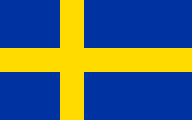
Sweden 2323 Flown for all purposes. A three-tailed version of the national flag is flown by the military.

Finland
national flag 2424 Allowed to be flown by anyone.
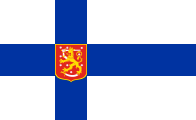
Finland
state flag 2525 Flown by the government, border guard, and public universities. The armed forces fly a version with a swallowtail cut.

Faroe Islands
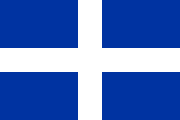
Greece
land flag 2626 Flown on land within Greece. The military flag had a crown in the centre of the cross.
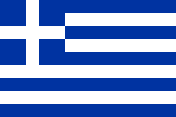
Greece
sea flag 2727 Flown at sea and abroad. The naval ensign had a crown in the centre of the cross.
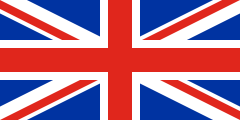
United Kingdom
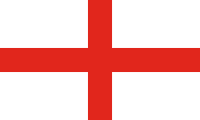
England · Guernsey

Scotland

Jersey
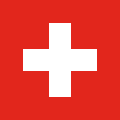
Switzerland

San Marino

Liechtenstein
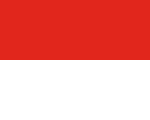
Monaco
national flag 2828 Allowed to be flown by anyone.

Monaco
princely flag 2929 Flown over the Prince's Palace and government buildings.

Vatican City
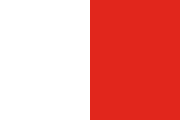
Malta
traditional flag 3030 Flown unofficially, mostly by civilian ships. There was also a blue colonial ensign with the Maltese coat of arms on it.

Portugal

Basque Country
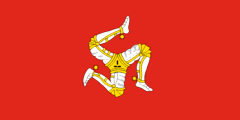
Isle of Man

Catalonia
senyera 3131 The traditional Catalan flag.
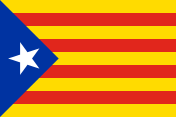
Catalonia
estelada 3232 The flag preferred by supporters of Catalan independence.

Brittany
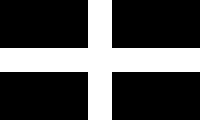
Cornwall
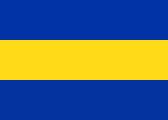
Åland

Galicia
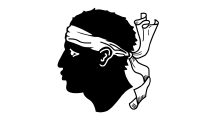
Corsica
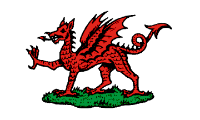
Wales
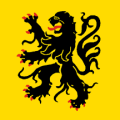
Flanders

Wallonia

Nazi Germany
Eastern Europe

Soviet Union
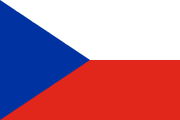
Czechoslovakia

Poland
state flag 3333 Allowed to be flown by anyone.
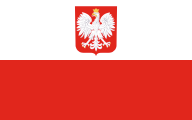
Poland
coat of arms flag 3434 Flown by merchant ships and diplomatic missions. Use of the national flag was banned during the Nazi occupation.
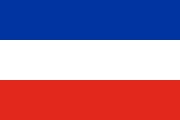
Yugoslavia

Hungary
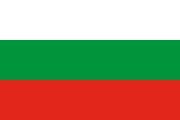
Bulgaria

Estonia

Lithuania
national flag 3535 Allowed to be flown by anyone.

Lithuania
state flag 3636 Flown by the President and on state-owned ships.

Latvia
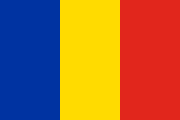
Romania
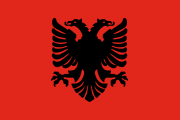
Albania
national flag 3737 Allowed to be flown by anyone.

Albania
royal flag 3838 Flown by the royal house, the government, the armed forces, and diplomatic missions.
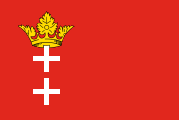
Danzig
South Asia and the Indian Ocean
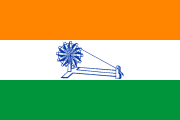
India 3939 The Svaraj ("self-rule") flag flown by nationalists and independence activists. British India had several colonial flags. A red civil ensign with the Star of India medal on it was used to represent India at international sporting events and in the League of Nations.
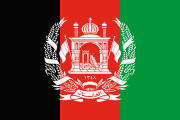
Afghanistan

Hyderabad

Jammu and Kashmir 4040 The maharaja's flag was red with yellow stripes at the top and bottom.

Nepal
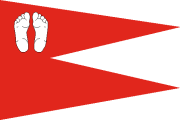
Jhabua 4141 The raja's flag was rectangular

Dewas

Kota
princely flag 4242 Flown by the Maharao and also used as a state flag. The flag was sometimes much longer.
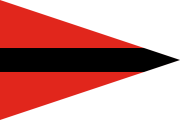
Benares

Sailana 4343 The previous plain red flag was sometimes flown as an alternate state flag.

Ajaigarh 4444 The reverse side of the flag showed a moon and a flower.

Mewar 4545 Mewar had a number of reported princely banners which were also sometimes used as state flags. The most common one had a large yellow sun and a blue katar dagger.
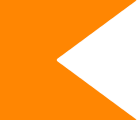
Kolhapur 4646 Kolhapur flew the Maratha saffron banner as a state flag. The maharaja had a diagonally-divided red and orange flag.

Dhar
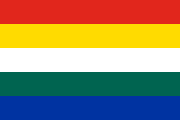
Jaipur
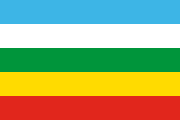
Alwar

Idar

Sirohi

Jodhpur
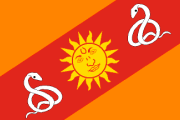
Gwalior

Jaisalmer

Nabha
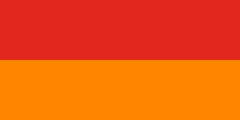
Bikaner

Mysore

Wankaner

Manipur
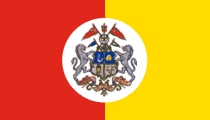
Tripura

Charkhari

Banswara
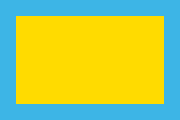
Panna

Dholpur

Chhatarpur

Kapurthala

Cambay
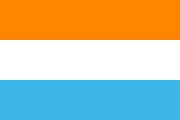
Bharatpur
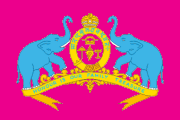
Kochin

Dhrangadhra

Rajpipla
princely flag 4747 Flown by the maharaja and often used as a state flag.

Rajpipla
national flag 4848 Allowed to be flown by civilians.
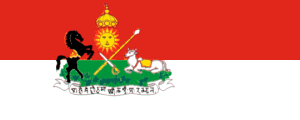
Indore 4949 The state flag was sometimes used without the emblem. Inland river boats flew a triangular pennant in the same colours.
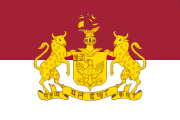
Bhavnagar 5050 There was also a red British colonial ensign with the coat of arms on it.

Tonk 5151 The nawab's flag, which was sometimes used as an alternate state flag, was white with a green hand.

Garhwal 5252 The maharaja's flag had a gold eagle on it. The armed forces used a flag with white and purple stripes.

Suket 5353 The raja's flag had a gold tiger head in the middle. The war flag was a red flag with the state coat of arms on it.
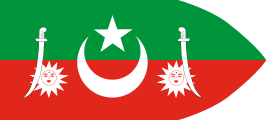
Kalat
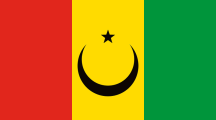
Bahawalpur

Janjira 5454 There was also a red colonial British ensign with a black tower and a white crescent and star.
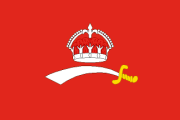
Baroda
princely flag 5555 Flown by the maharaja and often used as a state flag. The swallowtailed saffron Maratha banner was also sometimes flown. There was a red colonial British ensign with a scimitar and horseman badge.
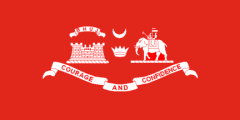
Kutch 5656 There was also a red British colonial ensign with a white sun and moon badge.

Travancore 5757 There was also a red British colonial ensign with a white shell badge.

Rajgarh

Pratapgarh 5858 The maharawat's flag had the same design but in yellow instead of white.

Cooch Behar

Barwani
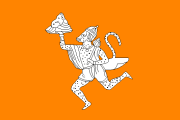
Porbandar 5959 There was also a red British colonial ensign with a white Hanuman badge.

Sitamau 6060 The Raja's flag had a red sun

Faridkot
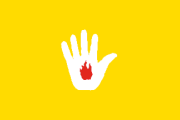
Rewa
princely flag 6161 Flag of the maharaja's dynasty, used as a state flag.

Jhalawar

Karauli

Orchha

Alirajpur
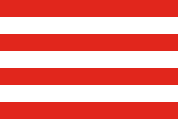
Khairpur
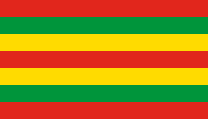
Patiala
princely flag 6262 Flag of the maharaja, also sometimes used as a state flag.

Dungarpur
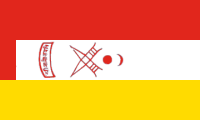
Bundi
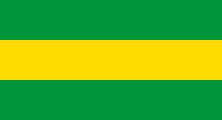
Baoni

Mandi 6363 The flag flown at the palace had the state coat of arms on it.

Kishangarh

Bhopal 6464 The nawab's standard had a crown and inscription on it.
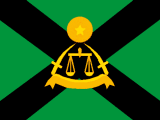
Jaora
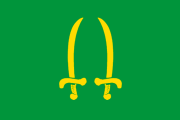
Rampur

Bilaspur

Sikkim
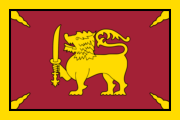
Sinhalese Flag 6565 Flown by Sinhalese nationalists in Ceylon, now Sri Lanka. There was also an infrequently-used blue British colonial ensign with an elephant badge.
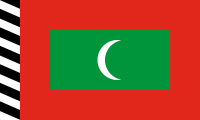
Maldive Islands

Muslim League 6666 Flag of the All-India Muslim League, which advocated for Muslim interests within British India. The direct predecessor of the flag of Pakistan.
East, Central and Southeast Asia
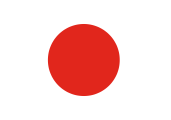
Japan
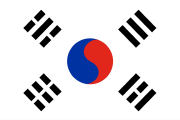
Korea 6767 Flown by the Korean independence movement and the unrecognized government-in-exile based in China. Banned under Japanese occupation.
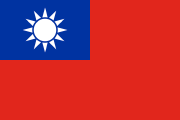
China

Tuva
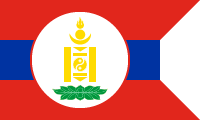
Mongolia
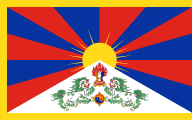
Tibet

Cambodia
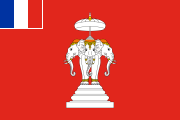
Laos
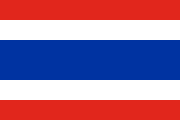
Siam

Philippines
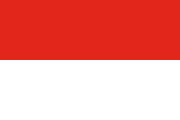
Indonesia 6868 Flown by Indonesian nationalists but banned by Dutch colonial authorities. The Dutch East Indies did not have an official national flag.
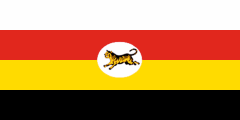
Federated Malay States

Brunei

Terengganu
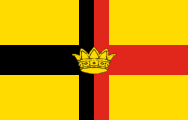
Sarawak
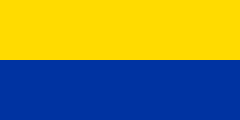
Perlis
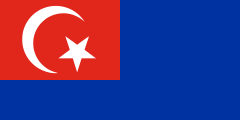
Johor
state flag 6969 Flown by the sultan and on naval ships.

Johor
merchant flag 7070 Flown by merchant ships and sometimes used by civilians as an alternate national flag.
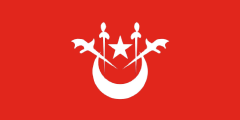
Kelantan
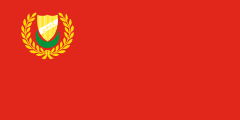
Kedah
state flag 7171 Flown over the sultan's palace and the military.
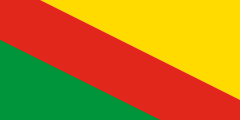
Kedah
merchant flag 7272 Flown by merchant ships.

Annam 7373 There was also a colonial "protectorate flag" which was plain yellow with a French tricolour in the top left corner.

Burma 7474 Flown by the nationalist Thakins, who sought the independence of Burma. A leftist version of the flag with a hammer and sickle was also in use. The British colonial government did not have a distinct flag.

Karen 7575 Flown by Karen nationalists seeking independence and separation from Burma.

East Turkestan 7676 The Uyghur nationalist flag. Xinjiang Province did not have an official flag.

Manchukuo 7777 Flown by the Japanese puppet state in Manchuria. Most countries did not recognize its independence.
Oceania

Australia
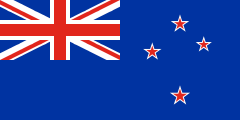
New Zealand

Hawaiʻi
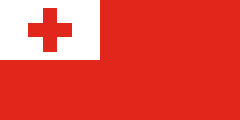
Tonga

Wallis and Futuna
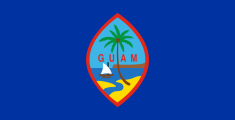
Guam
North America and the Caribbean
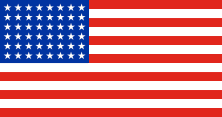
United States
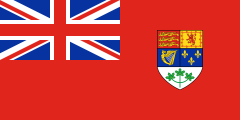
Canada 7878 Officially only to be flown civilian ships, but in practice flown widely on land as the national flag.
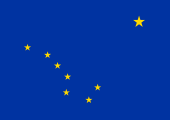
Alaska
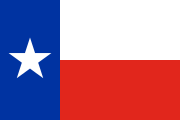
Texas

Acadia
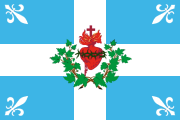
Québec
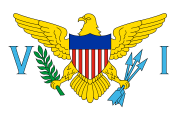
Virgin Islands (U.S.)
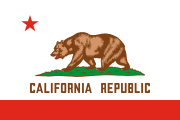
California
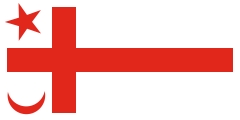
Mi’kmaq

Métis
Latin America
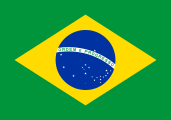
Brazil

Mexico

Peru
national ensign 7979 Flown by the government, the navy, the national police, and national sports teams. Raised at major ceremonies. The army uses a similar flag with a different coat of arms.
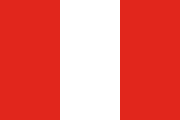
Peru
national flag 8080 Allowed to be flown by anyone.

Guatemala

Argentina
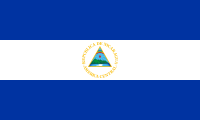
Nicaragua

El Salvador
national flag 8181 The most common flag, flown over most government buildings, at ceremonies, by diplomatic missions and often by public citizens.

El Salvador
inscribed flag 8282 An alternative government flag, most commonly flown by the armed forces but also on some public buildings and offices.
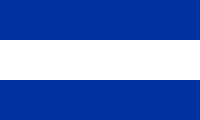
El Salvador
plain flag 8383 The simplest version of the national flag, flown by some private citizens.

Honduras

Paraguay
front side

Paraguay
back side

Costa Rica
national flag 8484 The most common Costa Rican flag. Officially designated for private citizens, but in practice often used on government buildings and schools too.

Costa Rica
national ensign 8585 Flown by the government and by diplomatic missions, although also used sometimes by private citizens.

Puerto Rico 8686 Flown by Puerto Rican nationalists. Display of the flag was initially banned under American rule.
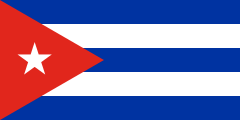
Cuba

Uruguay

Haiti

Dominican Republic
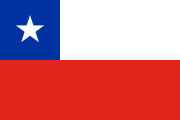
Chile
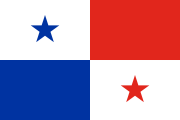
Panama

Colombia

Ecuador

Venezuela
national ensign 8787 Flown by the government and armed forces, and unofficially used by many private citizens.
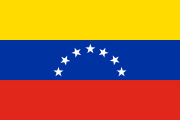
Venezuela
national flag 8888 Allowed to be flown by anyone.

Bolivia
state flag 8989 Flown by the governmnent. The armed forces flew a similar flag with olive and laurel branches around the coat of arms.
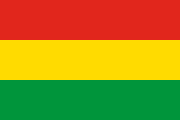
Bolivia
national flag 9090 Allowed to be flown by anyone.
Other International and Cultural Flags

Buddhist Flag
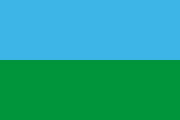
Romani

Pan-African Flag

Esperanto

Red Cross

Red Crescent
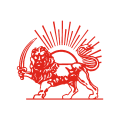
Red Lion and Sun
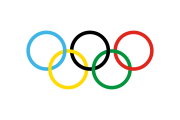
Olympic Games
Events of 1938
AUSTRIA • Austria was annexed to Nazi Germany on March 13.




BURMA • The nationalist Thakins replaced the peacock on their flag with a hammer and sickle at a party conference on March 24. This version of the flag was most prominently flown at the general strike which started this year.

HATAY • The Sanjak of Alexandretta was separated from Syria as the temporarily-independent Republic of Hatay on September 5. It would join Turkey less than a year later.

SAUDI ARABIA • The size of the inscription and sword changed on March 30.
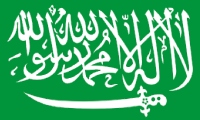


SPAIN • The Nationalist forces in Spain adopted a new coat of arms on February 2.

Notes
1 Flown by the government-in-exile. The occupied "Italian East Africa" had no official flag. ↩
2 Flown by partisans operating in Italian-occupied Ethiopia. ↩
3 Moroccan merchant ships in the French zone flew what was called the "Arab ensign", the national flag with a French tricolour added to the top-left corner. ↩
4 Flown by merchant ships operating out of the Spanish zone in northern Morocco. The Moroccan national flag was flown on land. ↩
5 Flown by nationalists and indepenence activists. The French colony in Algeria did not have an official flag. ↩
6 Flown by the government, and often by private citizens. At sea, and in certain ceremonial settings on land, the ratio was 1:3. ↩
7 Allowed to be flown by anyone. At sea, the ratio was 1:3. ↩
8 Flown unofficially by the Arab community. Merchant ships flew a red British ensign with a badge that said "PALESTINE". The Jewish community flew the modern flag of Israel. ↩
9 There were many variations of this flag, depending on who was flying it and when. Some versions would have added inscriptions, decorations or royal symbols. The flag could also be triangular. ↩
10 The number of points could vary. ↩
11 The design of the flag wasn't laid down in law, and this may have been one of many variations in use at the time. ↩
12 Flown by the Jewish community in the British mandate of Palestine. Direct ancestor of the flag of Israel. ↩
13 Flown by private citizens and merchant ships. The "Italian Social Republic", the Nazi puppet regime in the north, flew the plain tricolour as a national flag and had a war flag with an eagle gripping a fasces. The anti-fascist Italian partisans flew either plain tricolours or tricolours with a white or red star on the middle stripe. ↩
14 Flown by the government and navy. ↩
15 Flown by the Republican government during the Spanish Civil War. ↩
16 Flown by the rebel Nationalist faction during the Spanish Civil War. ↩
17 Allowed to be flown by anyone. ↩
18 Flown by the royal house, the government, and the armed forces. Also granted to a select list of private institutions and companies. ↩
19 Allowed to be flown by anyone. ↩
20 Flown only on state-owned buildings and naval ships. ↩
21 Allowed to be flown by anyone. ↩
22 Flown on government buildings and coast guard ships. ↩
23 Flown for all purposes. A three-tailed version of the national flag is flown by the military. ↩
24 Allowed to be flown by anyone. ↩
25 Flown by the government, border guard, and public universities. The armed forces fly a version with a swallowtail cut. ↩
26 Flown on land within Greece. The military flag had a crown in the centre of the cross. ↩
27 Flown at sea and abroad. The naval ensign had a crown in the centre of the cross. ↩
28 Allowed to be flown by anyone. ↩
29 Flown over the Prince's Palace and government buildings. ↩
30 Flown unofficially, mostly by civilian ships. There was also a blue colonial ensign with the Maltese coat of arms on it. ↩
31 The traditional Catalan flag. ↩
32 The flag preferred by supporters of Catalan independence. ↩
33 Allowed to be flown by anyone. ↩
34 Flown by merchant ships and diplomatic missions. Use of the national flag was banned during the Nazi occupation. ↩
35 Allowed to be flown by anyone. ↩
36 Flown by the President and on state-owned ships. ↩
37 Allowed to be flown by anyone. ↩
38 Flown by the royal house, the government, the armed forces, and diplomatic missions. ↩
39 The Svaraj ("self-rule") flag flown by nationalists and independence activists. British India had several colonial flags. A red civil ensign with the Star of India medal on it was used to represent India at international sporting events and in the League of Nations. ↩
40 The maharaja's flag was red with yellow stripes at the top and bottom. ↩
41 The raja's flag was rectangular ↩
42 Flown by the Maharao and also used as a state flag. The flag was sometimes much longer. ↩
43 The previous plain red flag was sometimes flown as an alternate state flag. ↩
44 The reverse side of the flag showed a moon and a flower. ↩
45 Mewar had a number of reported princely banners which were also sometimes used as state flags. The most common one had a large yellow sun and a blue katar dagger. ↩
46 Kolhapur flew the Maratha saffron banner as a state flag. The maharaja had a diagonally-divided red and orange flag. ↩
47 Flown by the maharaja and often used as a state flag. ↩
48 Allowed to be flown by civilians. ↩
49 The state flag was sometimes used without the emblem. Inland river boats flew a triangular pennant in the same colours. ↩
50 There was also a red British colonial ensign with the coat of arms on it. ↩
51 The nawab's flag, which was sometimes used as an alternate state flag, was white with a green hand. ↩
52 The maharaja's flag had a gold eagle on it. The armed forces used a flag with white and purple stripes. ↩
53 The raja's flag had a gold tiger head in the middle. The war flag was a red flag with the state coat of arms on it. ↩
54 There was also a red colonial British ensign with a black tower and a white crescent and star. ↩
55 Flown by the maharaja and often used as a state flag. The swallowtailed saffron Maratha banner was also sometimes flown. There was a red colonial British ensign with a scimitar and horseman badge. ↩
56 There was also a red British colonial ensign with a white sun and moon badge. ↩
57 There was also a red British colonial ensign with a white shell badge. ↩
58 The maharawat's flag had the same design but in yellow instead of white. ↩
59 There was also a red British colonial ensign with a white Hanuman badge. ↩
60 The Raja's flag had a red sun ↩
61 Flag of the maharaja's dynasty, used as a state flag. ↩
62 Flag of the maharaja, also sometimes used as a state flag. ↩
63 The flag flown at the palace had the state coat of arms on it. ↩
64 The nawab's standard had a crown and inscription on it. ↩
65 Flown by Sinhalese nationalists in Ceylon, now Sri Lanka. There was also an infrequently-used blue British colonial ensign with an elephant badge. ↩
66 Flag of the All-India Muslim League, which advocated for Muslim interests within British India. The direct predecessor of the flag of Pakistan. ↩
67 Flown by the Korean independence movement and the unrecognized government-in-exile based in China. Banned under Japanese occupation. ↩
68 Flown by Indonesian nationalists but banned by Dutch colonial authorities. The Dutch East Indies did not have an official national flag. ↩
69 Flown by the sultan and on naval ships. ↩
70 Flown by merchant ships and sometimes used by civilians as an alternate national flag. ↩
71 Flown over the sultan's palace and the military. ↩
72 Flown by merchant ships. ↩
73 There was also a colonial "protectorate flag" which was plain yellow with a French tricolour in the top left corner. ↩
74 Flown by the nationalist Thakins, who sought the independence of Burma. A leftist version of the flag with a hammer and sickle was also in use. The British colonial government did not have a distinct flag. ↩
75 Flown by Karen nationalists seeking independence and separation from Burma. ↩
76 The Uyghur nationalist flag. Xinjiang Province did not have an official flag. ↩
77 Flown by the Japanese puppet state in Manchuria. Most countries did not recognize its independence. ↩
78 Officially only to be flown civilian ships, but in practice flown widely on land as the national flag. ↩
79 Flown by the government, the navy, the national police, and national sports teams. Raised at major ceremonies. The army uses a similar flag with a different coat of arms. ↩
80 Allowed to be flown by anyone. ↩
81 The most common flag, flown over most government buildings, at ceremonies, by diplomatic missions and often by public citizens. ↩
82 An alternative government flag, most commonly flown by the armed forces but also on some public buildings and offices. ↩
83 The simplest version of the national flag, flown by some private citizens. ↩
84 The most common Costa Rican flag. Officially designated for private citizens, but in practice often used on government buildings and schools too. ↩
85 Flown by the government and by diplomatic missions, although also used sometimes by private citizens. ↩
86 Flown by Puerto Rican nationalists. Display of the flag was initially banned under American rule. ↩
87 Flown by the government and armed forces, and unofficially used by many private citizens. ↩
88 Allowed to be flown by anyone. ↩
89 Flown by the governmnent. The armed forces flew a similar flag with olive and laurel branches around the coat of arms. ↩
90 Allowed to be flown by anyone. ↩
